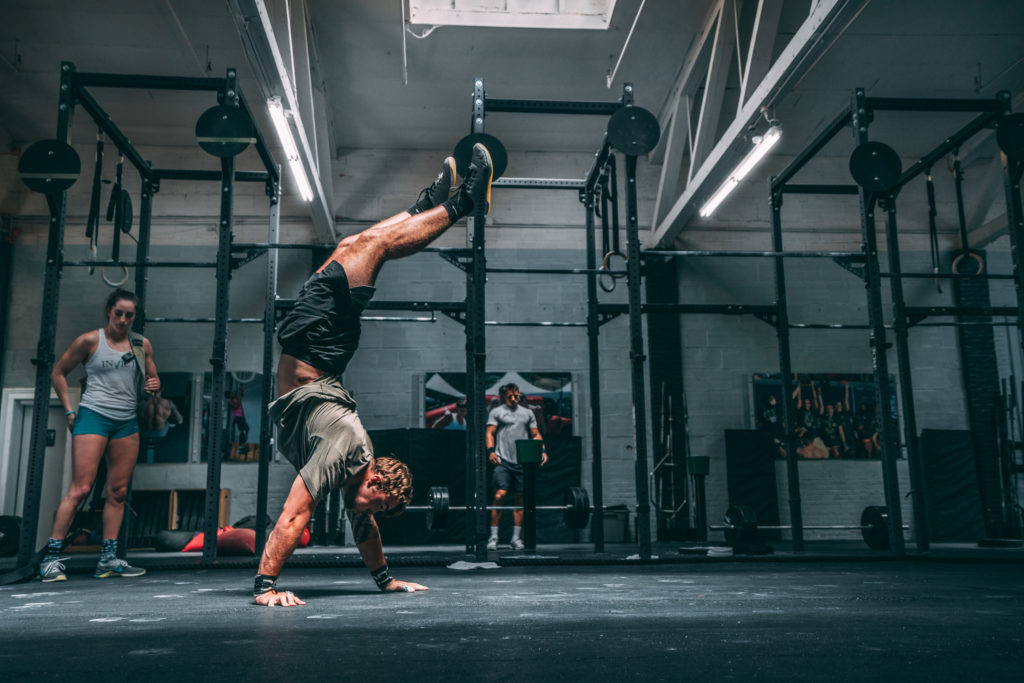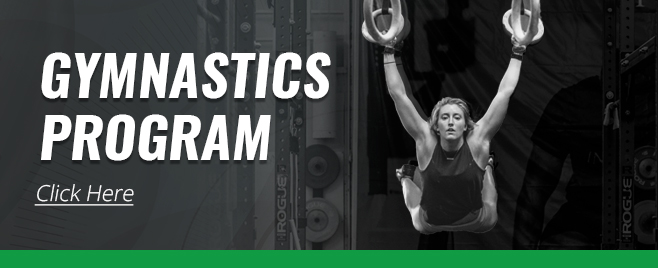
Using Steady State for Gymnastics Progression
Written by Aush Chatman
So you want to work on your pull-up, or your handstand, or your dips, that is great! But how do we go about adding in this additional work on top of everything else we do in our workouts?
Well when you are supplementing your training with a gymnastic goal, I advocate very strongly for a steady state approach to programming your progression with the gymnastics movement.
What is Steady State?
Steady state is trainer-speak for keeping your work at a certain level. Now if you have heard of steady state before in a classic endurance sense, what I am going to recommend for your gymnastics work, is going to defer slightly from that.
In the running world (and I am not a runner so don’t kill me if I oversimplify) steady state means staying at an easy to moderate pace for your training on a particular day. With our gymnastic work we aren’t going to do exactly that, we are going to play with perceived intensity a bit more and do it for weeks not just a single session.
Steady State Gymnastics Training
Start at a challenging – but doable – level with your exercise of choice. We’ll use handstand work as our example. Let’s say I can hold a belly to wall handstand for about 20 seconds in an all-out effort. My goal is to be able to hold a perfect 60-second handstand.
Break Up Total Time into Smaller Chunks
So let’s dive in, the 20 seconds total can be broken up into smaller chunks. We could consider 7 sets of 3 seconds. Five sets of 4. Four sets of 5. Or even 3 sets of 7. And they all get us about 20 seconds of handstand work.
With the 20 seconds being split, the training intensity will be lower than consistently doing a max effort handstand. The more sets, the less intense the work will be. I would lean towards 4 sets of 5, but that really is more based on how I like to program, this is a slightly more intense option, but should be completely doable.
Example of Steady State Handstand Training
Hold a handstand in the ‘belly to wall’ position for 4 sets of 5-second holds each set. For a true steady state program, stay with this same prescription for as long as necessary. The difficult part is determining when “necessary” has been met.
Requirements to Advance Your Steady State Training Prescription
For gymnastics work (and actually for any other domain), you will meet the requirements to move on when two things occur simultaneously:
1) Each set is PERFECT
2) Each PERFECT set is LOW PERCEIVED INTENSITY
The low intensity is really up to you, when it feels easy and you did it perfect, you are ready to move on. Until that happens you stay with the original prescription (see why it is called steady state?)
How to Progress Your Steady State
Once we have met PERFECTION at LOW INTENSITY we up the ante and start over again. In this example I would progress to 4 sets of an 8-second handstand hold. This part of programming is where experience comes in, either you have me (or another coach/book/etc) to tell you what comes next based on coaching experience, OR, as you put more exercises through these sorts of cycles you will learn yourself and get a feel for jumps that make sense for you.
However it happens, if you choose a good step up, the first week or so should be difficult (Higher Intensity) but doable! Then you stay with it until you again get to EASY PERFECTION, then you move on again.
Keep running the iterations until you meet your goal of a perfect 60-second handstand. Typically I would program 2-4 days per week of the same training day, based on your perceived effort this can last a couple weeks (as long as necessary).
Benefits of Steady State Training for Gymnastics
Here are some of the key benefits of a steady state program for you gymnastics work:
- Low Risk of Training Overload – The design of the program lends itself to lower intensity for most of your cycles (iterations), which makes it more ideal to layer on top of whatever workouts you are already doing. Most likely you would want 2 to 4 days each week with your gymnastics work programmed, great for off days and easy to move around if your other training left you smoked in the legs and you’re working pistols e.g.
- Low Risk of Injury – When extra work gets thrown in willy-nilly, the chances of injury or overstressing yourself rise exponentially. Having ANY organized program will guard against that a bit, but with steady state, again because low intensity is actually what we are aiming for, we should actually spend ZERO time where we are overreaching and getting some -itis in the joints.
- Strengthen the Whole System – This really is low injury risk part B, but when we spend the time to really master the level of progression we are at before we move on, we allow tendons and joints to catch up to the muscle progress. This idea is a little bro-sciency to be honest, BUT I believe there is underlying truth there and it is why steady state is a winning move IMHO.
The Downside to Steady State Gymnastics Training
I cannot in good conscience not also tell you about the biggest drawback…You may even be able to guess it, it is tedious, not to program that is easy, but to execute.
Remember our goal is to make it EASY, low intensity, so you will stay with exercises, sets and reps for a VERY LONG time at times. Try to imagine the math on the earlier example. How many weeks are you doing handstands against the wall a few days a week for before you hit your goal? So you have to really stick with it and keep the end result in mind.
How to Know Steady State Training is Working
The good news is, that in my experience if you can get to about week 5 you will KNOW you are much stronger and proficient at your chosen movement. That is generally where you start to want to jump ahead because you are feeling strong which is a temptation to guard against.
How to Keep Steady State Training Interesting
If you decide to use Steady State as a programming paradigm, fight against that monotonous feeling by playing. When you get bored mix it up a little every once in a while. Like I just said around week 5 or so you will feel pretty good, you have to take care not to overdo it and completely blow the low risk nature of the program, but expressing that new territory (strength and proficiency gains) at times, it is OK.
There are numerous ways to play and you will figure it out when you get there, I promise, but in general, for handstands maybe kick up away from the wall or practice walking on hands a bit, sky is the limit.
If you have been thinking about doing some extra work or finally nailing a gymnastic movement now that we are on quarantine, what better time than now to join up with the Invictus Gymnastics Online Program? You receive three workouts each week and can choose from three different levels for each movement which makes it super easy to keep your training in the steady state!
